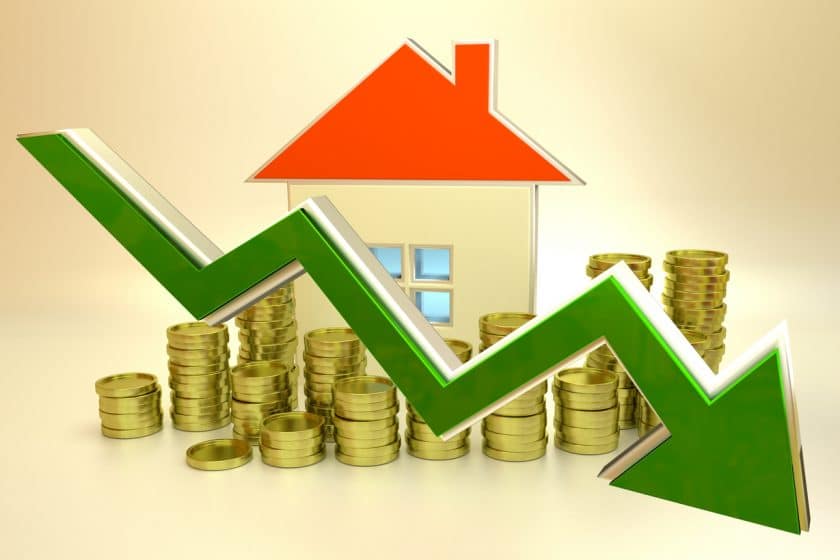In a significant trend seen in the Indian housing sector over the last five years, the latest data points towards a reduced difference between the ready reckoner rates (RRR) and the actual market prices in the primary (sale by the developer) segment in the top cities. From a more than 100% difference between the two rates in certain areas in Mumbai, Pune, Gurgaon, etc. in 2015, some localities presently show a mere 6% variation.
Ready reckoner rates – also known as circle rates or guidance values – are the minimum values set by a state government below which a property cannot be registered. Each area within a city has its own RR rate on which stamp duty is calculated. To align circle rates with the actual market prices, most state governments previously regularly reviewed and increased the RR rates in cities either y-o-y or in two years. However, market values increased only marginally in the same period.
For instance, average RR rates at Jogeshwari East (in Mumbai) stood at Rs 11,571/sq. ft. in 2015; today it is Rs 15,143 per sq. ft. – an increase of over 31% in five years. Concurrently, the market value in this period increased by only 6% – from Rs 16,300 per sq. ft. in 2015 to Rs 17,280 per sq. ft.
“The gap between market values and RR/circle rates in many areas is as low as 6-7%, equal or even negative. Registering a property below circle rates is not permissible. Section 43CA of the I-T Act says that developers/sellers will attract penalties for selling lower than RR rates. Moreover, even if buyers somehow purchased property below the circle rates, they will bear an additional tax burden as the difference between two rates is taxable – both in the hands of the buyer and seller. Reducing RR rates would reduce stamp duty on property purchase, thereby boosting buyer demand and also providing relief to developers as the multiple premiums they pay to the state governments are linked to the RR rates,” explains Anuj Puri, Chairman – ANAROCK Property Consultants.
The significant advantage of this reduced gap is that it discourages ‘black money’ transactions. The primary sales market in tier I cities today offers limited scope for unaccounted cash infusions because of the minimal gap between the state-notified circle rates and the market value quoted by developers in such regions.
In the last five years, most state authorities regularly increased the RR / circle rates in cities to align them with market values. Dwarka Expressway in Gurgaon, for instance, saw circle rates rise by 43% in the last four years – from Rs 2,900 per sq. ft. in 2016 to nearly Rs 4,133 per sq. ft. in 2020. However, market values in this period increased only by 10%. The gap between the two rates is narrowing significantly. Other cities show some equally interesting trends.
Mumbai
Mumbai has seen a significantly reduced gap between market value and RR rates over the last five years. For instance, in Lower Parel the difference between the two rates is just 6%, followed by Worli with 8% and Jogeshwari East with a 12% difference.

In value terms, the average RRR for flats in Mumbai’s Lower Parel is approx. Rs 32,609/sq. ft. while the average market value is Rs 34,660/sq. ft. In Worli, another high-profile area in the city, the average RR rate is Rs 35,350/sq. ft. as against the average market value of Rs 38,560/sq. ft.
Having said this, there are also some localities where the difference between the two rates remains as high as 58%. However, this can be attributed to the ultra-luxury specifications in some projects. For instance, in Tardeo, the gap between the market value and the RR rate is 58%. The average RRR is Rs 23,597/sq. ft. while the average market value is Rs 56,659/sq. ft. In Dadar, the average RRR is approx. Rs 13,624/sq. ft. and the market value is Rs 32,600 per sq. ft.
Pune
In Pune, the areas considered for analysis include Balewadi, Dhanori, Baner, Kharadi and Erandwane. In the last five years, the gap between the RR rates and market value in these localities reduced significantly. In Balewadi and Dhanori, the gap is presently just 6%. The average RR rate in Balewadi is Rs 6,359 per sq. ft. while the market value stands at Rs 6,725 per sq. ft. In Dhanori, the RR rate is around Rs 4,666 per sq. ft. as against an average market price of Rs 4,950 per sq. ft.

In 2015, the difference between the two rates was around 25% and 26% respectively. In Baner, the gap has narrowed to 7% from 37% in 2015, and in Kharadi it is now 10% as against 25% in 2015. However, in Erandwane, the difference is somewhat higher at about 35%. The current average RR rate is approx. Rs 10,800 per sq. ft. while avg. market value is Rs 14,600 per sq. ft.
Noida
Contrary to other top cities, Noida saw a reduction of as much as 10% in circle rates in the last two years – a step taken to boost real estate demand. Circle rates on Noida Expressway have reduced from Rs 4,700 per sq. ft. in 2016 to Rs 4,366 per sq. ft. in 2020. As a result, the gap between the market values and circle rates has increased in the last four years. The difference between the two rates was 10% in 2016 and is now at 16%.

In the same period, average market values in Noida also decreased by 2% – from Rs 5,185 per sq. ft. in 2016 to nearly Rs 5,075 per sq. ft. in 2020. Similarly, in Sector-150 the circle rates remained stagnant at Rs 3,716 per sq. ft. in the last four years. However, in Central Noida areas, the difference between circle rates and market prices has reduced from 47% in 2016 to 34% in 2020.
Gurgaon
Contrary to trends in Noida, the gap between the two rates narrowed in the last four years. Sohna Road, for instance, saw the gap reduce to 35% in 2020 as against 38% early in 2016. In Golf Course Road, the difference has reduced to 75% now as against 104% in 2016. Interestingly, average prices have also reduced at Golf Course Road – to Rs 13,150 per sq. ft. in 2020 as against Rs 13,700 per sq. ft. in 2016.

Bangalore
In Bangalore too, the difference between guidance value (as it is called here) and market values has shrunk over the years. In Rajajinagar, for instance, the gap is currently at 48% as against 91% back in 2015. The average guidance value in the last five years has increased by 39% – from Rs 6,500 per sq. ft. in 2015 to Rs 9,012 per sq. ft. in 2020. Meanwhile, average prices during this period in the area increased by just 7%.

Similarly, Indiranagar has seen the guidance value increase by 25% – from Rs 8,250 per sq. ft. in 2015 to approx. Rs 10,310 per sq. ft. in 2020. Interestingly, the market value also rose by nearly 22% in this period. Thus, the gap between guidance and market values reduced only marginally between 2015 and 2020. It was 14% in 2015, and now it is approximately 12%.
This article is contributed by Anuj Puri, Chairman, ANAROCK Property Consultants.
(The views expressed here are solely those of the author and do not necessarily represent or reflect the views of RoofandFloor)






everyone must read this blog,Sharing great information about property blog.
Thanks,keep updating.